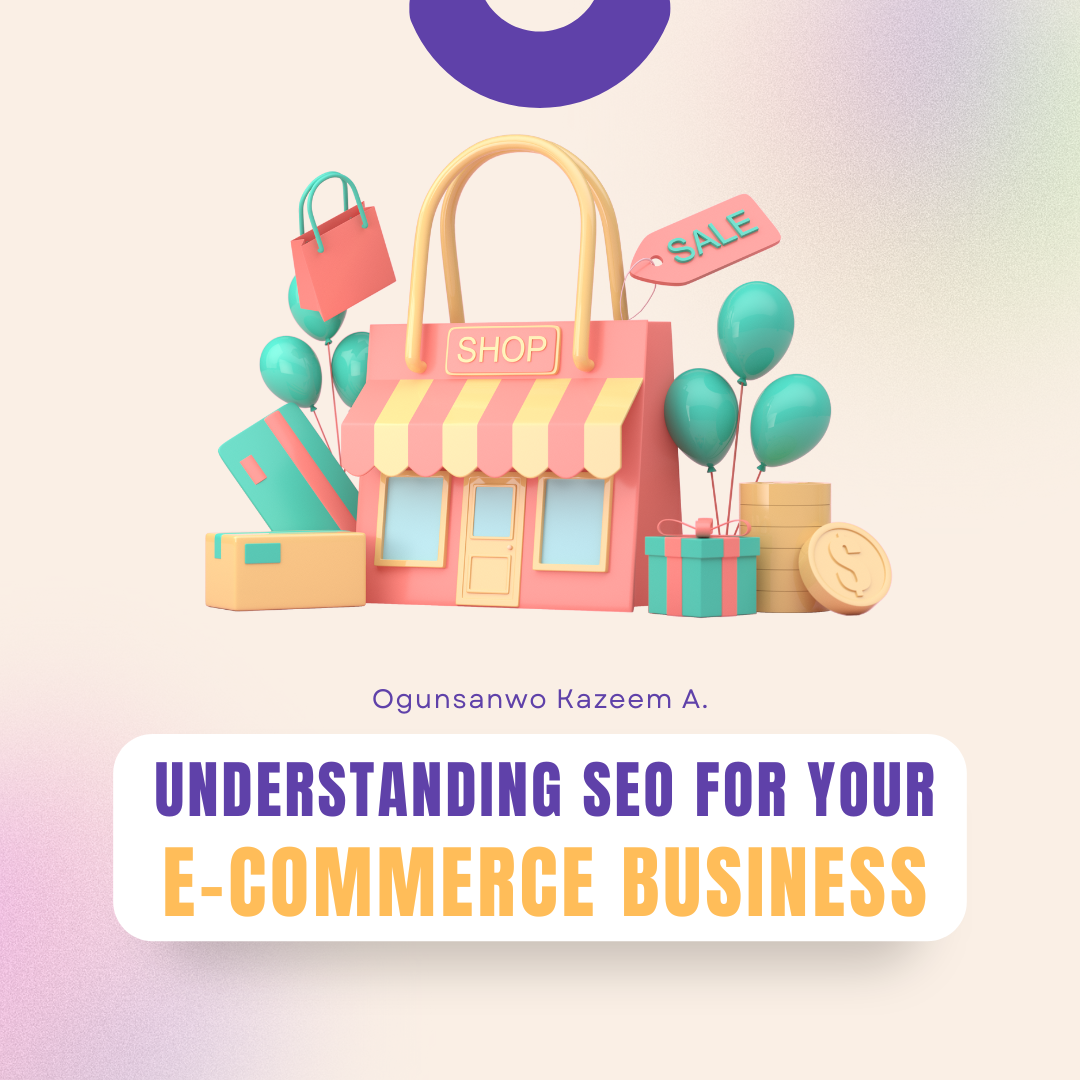Understanding SEO for E-commerce Content

Picture this – you have an e-commerce site, a digital marketplace filled with products waiting to be discovered by shoppers. Hold up – your store isn’t getting the attention it needs. It is like a hidden treasure chest buried under the internet’s vast sand because you didn’t apply proper SEO practices. It’ll require an effective SEO strategy aimed at search engines and customers to dig it out.
How can you apply SEO to your digital marketplace, where every click is a note in the symphony of success? Let’s dive right in.
The SEO Foundation: Building Blocks for Your E-commerce Empire
Before diving into the specifics of this article, let’s take a quick look at SEO for e-commerce. Think of it as having a solid foundation for a digital building. Search Engine Optimization, or SEO, is the method of tweaking and improving your website’s content, structure, and code to boost its visibility and position on search engine results pages (SERPs). This process aims to make your site more appealing to search engines.

What does this mean for e-commerce? SEO plays a vital role in driving business success. It ensures people can find your products and services when needed. When you put money into SEO, you can get the most out of your online store and help your business grow online.
Now that we’ve settled that, let’s examine a few aspects of SEO that you SHOULD not overlook.
1. Keywords – Your Digital Compass
For your e-commerce site, think of the internet as the wilderness. Keywords act as a guide leading potential buyers to you and what you’re selling. You begin by figuring out words and phrases your target customers will use when looking for products or services similar to yours.
For instance, if you sell personal fragrance products, potential keywords might include “long-lasting perfumes,” “perfume for women,” and “lasting fragrance oils.”
You must strategically place these keywords throughout your product titles, descriptions, and metadata. Doing this helps to attract the right audience. If you’re unable to think of keywords, don’t fret. Some tools can help you discover keywords fitted for your products, including Google Keyword Planner and Ahrefs.
Read: Mastering Keyword Research For Content Writers
2. On-Page SEO
For any business, you must put your best foot forward on the digital stage. On-page SEO affords you that chance as it involves optimising individual pages. It aims to improve the visibility and relevance of these pages. This includes creating compelling product descriptions, informative and engaging content, and descriptive alt tags for images while incorporating keywords naturally.
Imagine you’re selling organic skincare. A well-optimized description might read:
“Discover nature’s glow with our organic face serum. Packed with antioxidants, this serum rejuvenates your skin, leaving it radiant and refreshed. Perfect for those seeking a natural skincare solution.”
The User Experience: The Customer’s Journey
If one were to compare e-commerce to a grand opera, the user experience would play the leading role. A smooth UX, coupled with a good time spent on the site, encourages visitors to explore more of the website and finally convert them into customers.
How, then, do you make your site customer-friendly?
1. Mobile Optimization: A Pocket-Friendly Approach
With the rise of mobile shopping, mobile optimisation is non-negotiable. You have to ensure your website is responsive and your loading time across devices is fast. A clunky mobile experience is akin to inviting guests to a party and running out of “jollof rice” or “amala”—disappointing.
Imagine a first-time visitor on your website during their lunch break. You’ve won the battle if your site’s loading time is second. Only then can you say, “Shop till you drop.”
Responsive designs and quick load times are key to keeping mobile users engaged.
2. Navigation: The Digital GPS

Your site’s GPS is navigation – it guides visitors to their desired destination. As an e-commerce site, your navigation must be intuitive, straightforward and easy to find categories and products. You have to avoid a cluttered navigation menu; it’s like giving out a faded map – it’s of no help.
Consider using search bars and breadcrumb trails to help users find what they need easily. An organised, user-friendly site not only encourages exploration but also boosts conversion rates.
Content is KING: Craft Engaging Narratives
Across all industries, we can all agree that content is the crown jewel of a kingdom. Content informs, entertains, and convinces your audience to go with you rather than the next person.
Here’s how your content comes into play:
1. Product Descriptions: Painting Vivid Pictures
A great product description is a bit like a miniature version of a meaningful story that perfectly conveys the message of your product. A clear picture should be made in the customer’s mind using bright words. Moreover, be sure to mention the advantages and characteristics. You can also add some way of your own.
For instance, if you sell handbags, instead of just writing “leather handbags”, try
“Elevate your style with our premium leather handbag, expertly crafted to combine timeless sophistication with modern functionality, perfect for making a statement at work or on the town.”
Read: How to Use Storytelling to Make Your Tech Writing Engaging
2. Blog Content: Storytelling’s Power
A polished blog is a rich mixture of information and spark that invests the customer with belief, making you an authority in your phase. For instance, if you sell perfumes, a blog post titled
“Tips and Tricks for Making Your Fragrance Last Longer”
can attract perfume lovers who might also be interested in your products. You can drive traffic and conversions by using keywords naturally and including relevant links.
Read: 5 Ways to Improve Your SEO as a Content Writer
Technical SEO: Behind The Scenes
Behind the curtain of your site lies the unsung hero who ensures smooth operation—technical SEO. Technical SEO optimises elements that are not immediately seen but are crucial to your site’s performance.
They include the following:
1. Site Speed: Need for Speed
Site speed is akin to the tempo of a good song—it keeps everything moving and your audience hooked. You want to avoid a slow-loading site, as it is an easy way to lose your customers.
Tools like Google PageSpeed Insights can help you identify and fix issues affecting site speed. Minimising image sizes, leveraging browser caching, and reducing server time can also keep your site at optimum speed. A fast site enhances your UX and boosts SEO rankings.
2. Secure Connections: Gaining Trust

When it comes to e-commerce, security is still the overriding concern. Your website should support HTTPS to increase the safety of customers’ data and show them that you are trustworthy. Secure payment options and positive customer reviews should also be included as trust signals to ensure that you are a reliable company providing safe online payment transactions.
A secure customer is the most important factor in a site’s ranking and can also help it rank higher in the search engines. So, in addition to Google, sites that begin with HTTPS will receive more visitors, further improving your website’s SEO.
Analytics: Measure The Heartbeat of Your Site
To maximise your SEO, you have to measure and adjust your strategy. A few analytics tools will help you understand how your site is working.
1. Tracking Performance: Data is Life
When you monitor your site’s performance, you are like a detective in a criminal investigation class; you explore your site’s strengths and weaknesses. You verify analytics such as organic traffic, bounce rates, and conversion rates to understand how users engage with your site.
That data helps specify the keywords that perform better than others on your website, the pages with the highest bounce rate, and the places where users drop off in the sales funnel. Armed with these findings, you can now take the right steps to upgrade your SEO plan.
Read: The Top Predictive Analytics Tools in 2024
2. A/B Testing: Your Testing Ground
A/B testing is your laboratory for experiments. You get to test different site elements, like headlines, images, or CTA buttons, to see what resonates best with your audience.
For instance, use two variant product pages to compare your conversion rates to your new sample. A/B test enables you to tweak your website to meet your user’s needs, thus making your SEO technique more vital and efficient.
Conclusion: Your Seo Journey Awaits
With these strategies in hand, you’ve got a ticket to the grand concert of e-commerce. You’re armed and ready to transform your online store into a majestic performance with captivating search engines and customers. Remember—SEO is a continuous journey of optimisation and adaptation rather than a one-time act.
So, tune your SEO instruments, hit the right notes, and watch your digital empire boom!
About the author

Kazeem Ogunsanwo
SEO Content Writer, Editor
Writer’s Rating:
I’m Ogunsanwo Kazeem, and I love telling stories in the simplest, most captivating way possible. I’ve been working as a Content Writer and Editor for over three years now. What does that mean? Well, it means I write and polish all sorts of stuff—from academic papers to articles about anything you can imagine!


